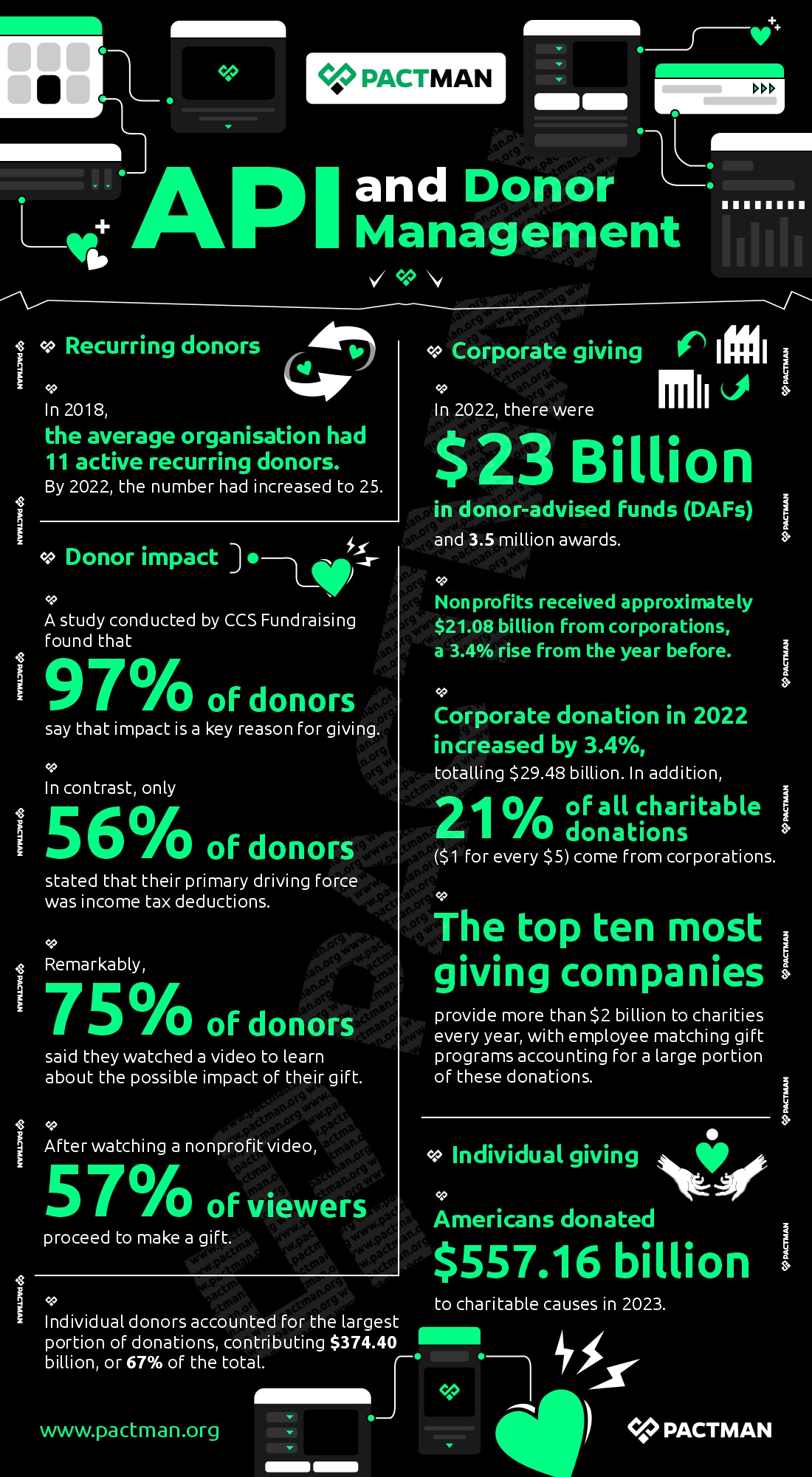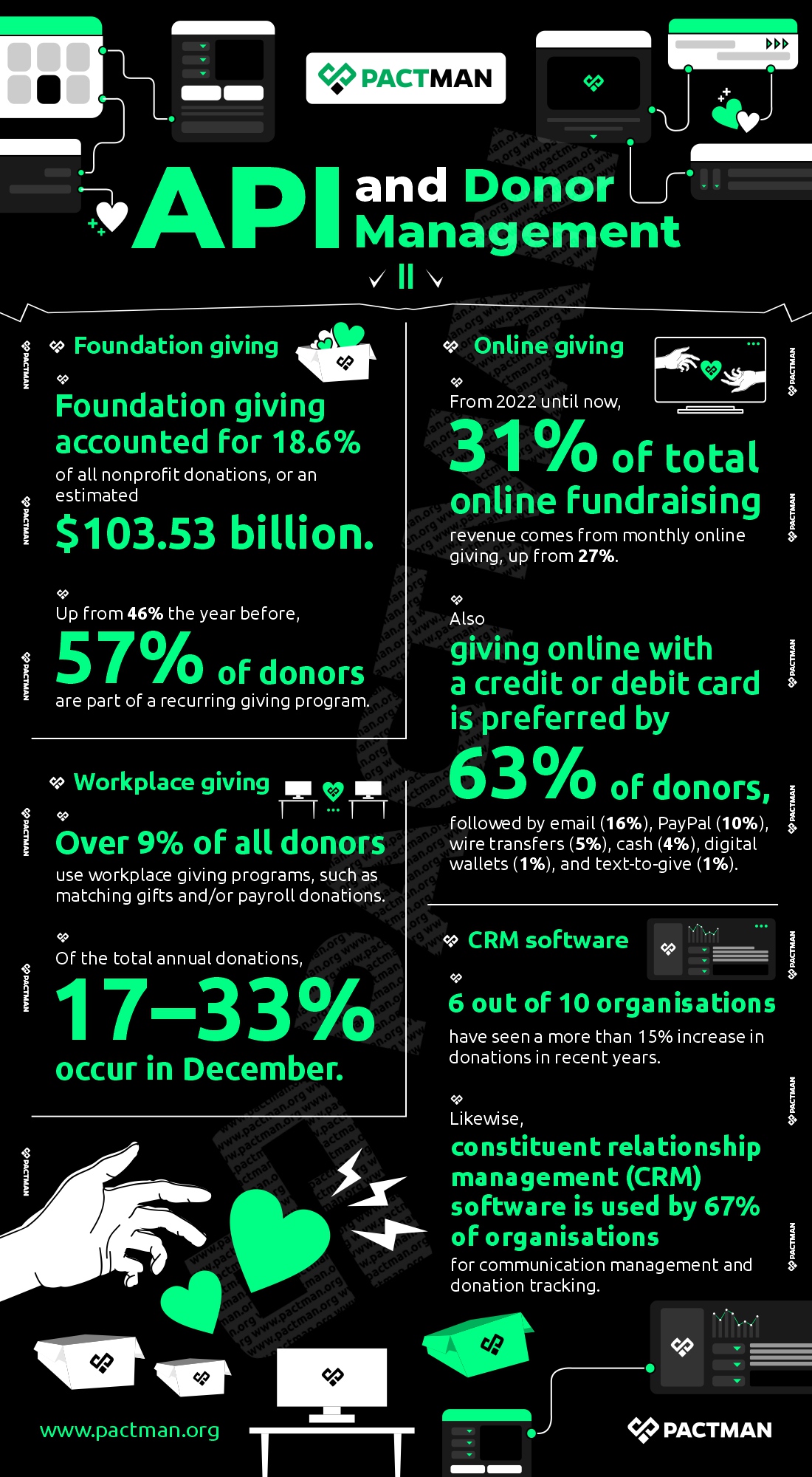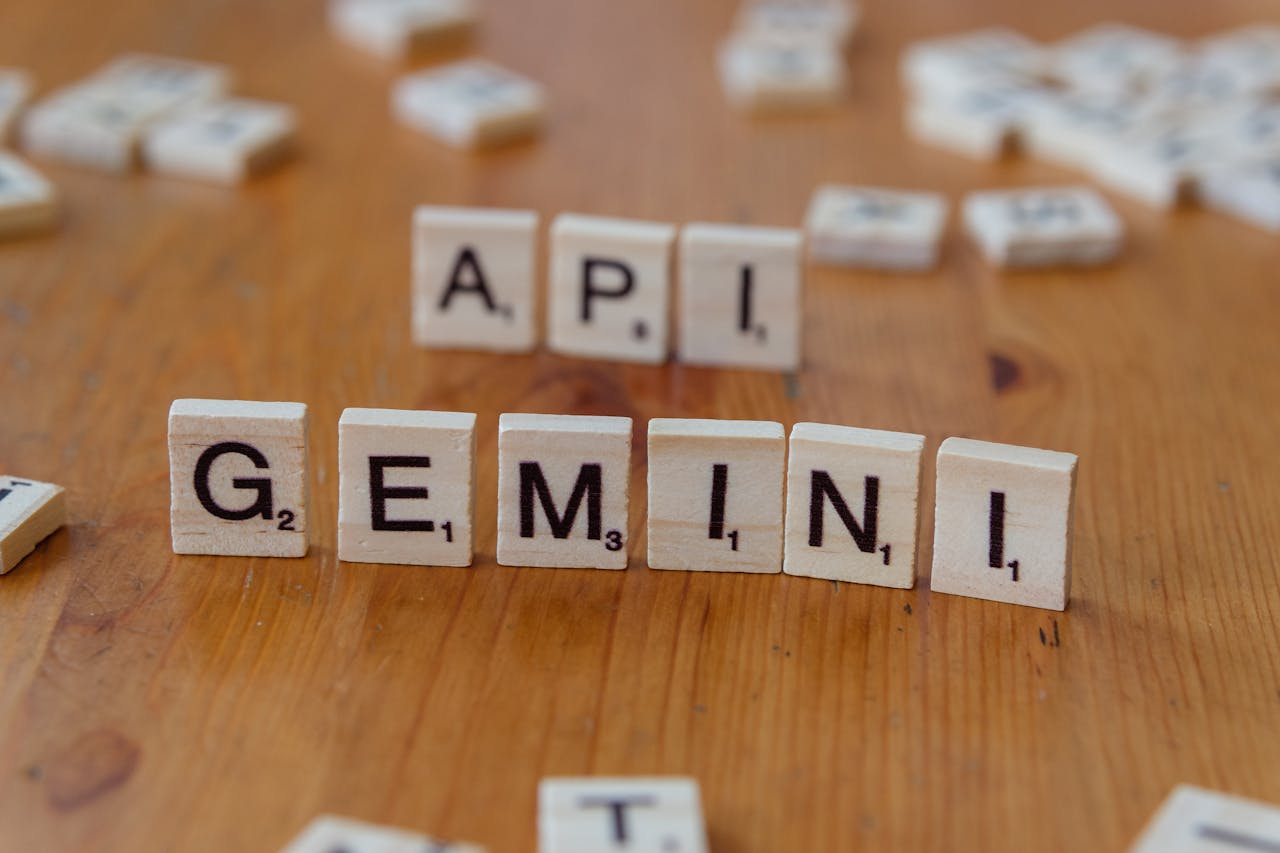I
Introduction
The continuous growth in the number of nonprofit organisations and the increasing demand for NPO services have presented certain difficulties for NPOs in managing and acquiring donors. Innovation has therefore become a defining requirement for the majority of organisations to mitigate these challenges.

The idea behind the predominance of innovation in nonprofit operations is that donors worldwide have made funding nonprofits contingent on their ability to adopt fresh and different approaches to traditional development models. Now more than ever, donors inquire about the nonprofit’s ability to meet its objectives before donating. Is the organisation conducting its operations honestly? Given the myriad of uncertainties, donors typically base their funding decision on the credibility of the organisation in question.
Trust is essential to gaining the donor’s long-term loyalty. Higher levels of trust greatly influence donation decisions, and enhancing NPOs’ capacity to raise funds can significantly impact their ability to survive and operate effectively.
This article will consider the role of nonprofit APIs in improving donor management and how APIs are shaping the sector for good.
II
From Manual to Automated: Understanding APIs and Donor Management
Donors, foundations and grantmaking organisations cannot afford to use outdated tools in a world where data is moving at the speed of light. Hence, a new mandate for social good has emerged in the twenty-first century:
- work more efficiently,
- move more quickly, and
- establish confidence with funders.

The digital connectors known as APIs (Application Programming Interfaces) are revolutionising the way organisations manage relationships, adhere to rules, and secure funding. However, what exactly are APIs? You can think of them as unseen conduits that facilitate communication between software systems. For the most part, they silently power the apps we use on a daily basis. This includes those that let us check our bank balances and book flights.
Also, APIs are the essential infrastructure in the nonprofit sector that allows lean teams to accomplish more with less. They can pull compliance data in a matter of seconds, instantaneously validate a charity’s status, and precisely integrate donor information across platforms.
On the other hand, donor management is the strategic process of monitoring, interacting with, and stewarding donors over time. It is the crucial imperative of fundraising for charitable organisations. Based on reliable data and institutional trust, effective donor management guarantees that the appropriate message reaches the right supporter at the right time. Conversely, funding dries up quickly when donor trust is violated, whether through administrative bottlenecks, obsolete compliance records, or unverifiable charity statuses. All in all, purpose-driven growth and digital innovation come together in the synergy between donor management and APIs.
III
Statistics on Donations and Donor Management
This section will consider critical statistics on donor management and donations.
1. Recurring donors
In 2018, the average organisation had 11 active recurring donors. By 2022, the number had increased to 25.
2. Donor impact
A CCS Fundraising study found that 97% of donors say that impact is what motivates them to give. In contrast, only 56% of donors stated that their primary driving force was income tax deductions. Remarkably, 75% of donors revealed that they watched a video to learn about the probable impact of their gift. After watching a nonprofit video, 57% of viewers proceed to make a gift.

3. Corporate giving
In 2022, there were $23 billion in donor-advised funds (DAFs) and 3.5 million awards. Also, nonprofits received approximately $21.08 billion from corporations, a 3.4% rise from the year before.
Corporate donations in 2022 increased by 3.4%, totalling $29.48 billion. In addition, 21% of all charitable donations ($1 for every $5) come from corporations. The top ten most giving companies provide more than $2 billion to charities every year, with employee matching gift programs accounting for a large portion of these donations.
4. Individual giving
Americans donated over $557.16 billion to nonprofit causes in 2023. Individual donors accounted for the largest portion of donations, contributing $374.40 billion, or 67% of the total.

5. Foundation giving
Foundation giving comprises 18.6% of all charitable donations, adding up to $103.53 billion. Up from 46% in the previous year, 57% of donors participate in a recurring giving program.
6. Workplace giving
Workplace giving programs, like matching gifts and/or payroll donations, are used by over 9% of all donors. Of the total annual donations, 17–33% take place in December.
7. Online giving
From 2022 until now, 31% of total online fundraising revenue comes from monthly online giving, up from 27%. Also, 63% of donors give online with a credit or debit card, followed by email (16%), PayPal (10%), wire transfers (5%), cash (4%), digital wallets (1%), and text-to-give (1%).
8. CRM software
6 out of 10 organisations have seen a more than 15% increase in donations in recent years. Likewise, constituent relationship management (CRM) software is used by 67% of organisations for communication management and donation tracking.
IV
The Hidden Cost of Not Using APIs in Donor Management
Speed is important in both tech and philanthropy. Timeliness for campaigns is becoming constrained. Cycles of grants are getting shorter. Donors want things to be clear and quick. Now more than ever, efficiency in the back end will drive the next big step in philanthropic giving.

There are more than 1.8 million registered nonprofit organisations in the United States, yet regulatory control is uneven. As earlier stated, the nonprofit sector is currently being reshaped by data and compliance, having previously been driven by goodwill and mission alignment. Not only are today’s donors giving to causes, but they are also knowledgeable, wary, and insist on openness. To release grant funding, institutional donors now demand regular compliance verification.
The lack of infrastructure, not a lack of purpose, is the reason why donor management is dysfunctional in the nonprofit sector. Also, donor disengagement and data fragmentation are the main growth obstacles for charity organisations.
A larger fact is reflected in this paradigm shift: credible governance data and impact narratives are both essential to donor trust. The challenge of getting IRS Form 990 data, manually confirming charity status, and maintaining good standing with the IRS, OFAC, and state registers is well-known to all nonprofit executives. Although they are essential, these duties take time and resources. Administrative compliance-related duties can consume staff hours at mid-sized organisations. Also, significant gifts, grant payments, or partnership creation may be halted by delays in compliance checks.
A better bridge is needed for the future, one that is constructed on the pipes (APIs) that connect platforms. These days, trust is redefined by APIs as a function of validated facts rather than an emotion. Every API call has a human element to it: a donor’s decision to donate, a thank-you note from a fundraiser, an impact metrics analysis by a grantmaker, among others.
V
How APIs Address Donor Management Issues and Influence Development
APIs are the ledger in a world where trust is the most valuable asset. Compliance has been seen as a hindrance, something to put up with rather than welcome. However, compliance can act as a catalyst for strategic giving when it is supported by the appropriate technological infrastructure.

Application programming interfaces, or APIs, are the backbone of the contemporary digital economy. They change the rules and play a vital role in the nonprofit industry by expediting due diligence, simplifying donor administration, and guaranteeing local and federal compliance.
Designed specifically for 21st-century organisations, Nonprofit APIs give NGOs an easy method to meet regulatory requirements, manage donor expectations, and preserve institutional trust. Fundamentally, it serves as a link and a translator. For the most part, they serve three primary functions.
- APIs allow two systems to communicate.
- APIs eliminate the manual handoffs that cause impact to be delayed for organisations.
- They provide machine-driven accuracy to mission-driven tasks.
NGOs that leverage technology can retain donors better than their counterparts. Likewise, APIs are essential to this enablement as they create strategic capability in addition to saving time. Employees may concentrate on stewardship, narrative, and systemic change when they are released from spreadsheets.
Social change has historically been led by nonprofit organisations. However, they must also lead the way in technological advancement. APIs are now essential rather than optional. Furthermore, nonprofit APIs provide a safe and adaptable solution. They have fundamentally human potential in addition to technological potential. Real-time feedback loops are made possible via APIs, which promote timeliness, transparency, and trust.
In summary, nonprofit tools must provide the same degree of responsiveness in a world where Amazon and Netflix have influenced donor expectations. Without compromising integrity, APIs offer the flexibility to satisfy such demands. Hence, nonprofit leaders may scale their digital presence across all touchpoints with the use of APIs.
VI
Benefits of the Pactman Nonprofit Checkplus API
In this section, we will consider the benefits of the Pactman Nonprofit Checkplus API for donors, foundations and grantmaking organisations.

1. Accelerated Fundraising and Grantmaking
Think about this: There are 150 grant applications being reviewed by a charitable foundation. In the past, employees would spend days looking up board members online, verifying charity statuses, and getting letters of verification. However, with an integrated Nonprofit API, staff may now concentrate on mission alignment and impact assessment.
Pactman Nonprofit Checkplus API immediately flags nonprofits that are not in compliance. Likewise, real-time compliance checks can be integrated into donation workflows for a national nonprofit conducting a corporate giving campaign. Now more than ever, donors can be reassured that their donation is going to organisations that have been verified and are in compliance with regulations. Even more, fundraising turns into a trust-based exchange driven by transparent data, not just a transaction.
2. Safe and Audit-Ready Data
Also, nonprofits and funders alike are under pressure to keep their audit trails spotless. As a result, digital recordkeeping is now strategic, not optional. Audit preparation is one of the most important—and least glamorous—aspects of donor management. Verification documentation and compliance snapshots must be quickly retrieved for IRS Form 990 requirements, public disclosures, and internal assessments.
Pactman Nonprofit Checkplus API ensures that every charity check and compliance status is kept in a digital audit, is export-ready, date-stamped, and source-traceable.
For funders, auditors, and internal stakeholders, this streamlines the compliance story. Furthermore, organisations enjoy better transparency, lower exposure to legal or reputational risk, and cheaper audit costs.
3. Speed process
Thirdly, Pactman Nonprofit Checkplus API speeds up the process of deploying philanthropic capital. This is especially in disaster relief, education, and public health, where funders can spend weeks confirming grantee eligibility, parsing public records, and manually validating nonprofit status. The platform allows for real-time matching with IRS and government databases and is integration-ready for grant platforms. Imagine a disaster response grantmaker activating funds in 24 hours, not weeks; or a crowdfunding platform making sure all listed nonprofits are legally compliant in real time.
4. 200 Monthly Charity Checks
Also, Pactman Nonprofit Checkplus API allows for up to 200 charitable checks each month. This volume is best suited for:
- Verification of grantees by grantmaking organisations
- Onboarding new partners for fiscal sponsors
- Nonprofits assessing collaborators or subgrantees
- Platforms for crowdfunding that screen applicants
To begin with, fresh data is pulled from several reliable sources for each check, and it is triangulated for optimal accuracy. In a world where philanthropic due diligence is scrutinised more than ever, this API tool puts organisations in a position to respond quickly and ethically.
Funders and donors can thoroughly screen recipients thanks to this degree of granularity without delaying the funding process. Whether you are a program director at a private foundation or a CSR officer at a Fortune 500 corporation, having access to large, automated checks changes the pace of your operations.
5. Smart Data that Simplifies Complexity
Inconsistent data is a significant obstacle to efficient donor management. However, with APIs, regulatory complexity is transformed into organised, actionable intelligence, which also normalises diverse data streams.
To help you make better decisions, Pactman Nonprofit Checkplus API offers granular data layers for recording exemption types, ruling dates, and revocation reasons. Also, for large-scale donor networks or federated giving campaigns, users can validate whole datasets in a single API call rather than verifying NGOs one at a time. For nonprofit verification, the API provides a single source of truth by connecting to several federal databases.
6. Access, Beginning at $0 Per Month
Lastly, Pactman’s pricing structure is among its most disruptive features. Most compliance technologies require consultant-led implementations and costly contracts. With Pactman, organisations can access the basic plan for free.
Get access to important verification features and scale to price only after your operations have been settled. You don’t need a new system if your donor data is scattered across silos, your fundraising team is overworked, or your reporting takes weeks to put together. What you require is a stronger connection, like the Pactman Nonprofit Checkplus API.
This flexibility supports mission-driven scalability without tech-induced stress. Also, the platform is accessible to donors, grantmaking organisations, firms, nonprofits and developers. The API’s simple documentation makes it straightforward to integrate into any system.
Conclusion
With the ongoing digitisation of philanthropy, the question of whether or not to automate donor management has given way to the question of how. Success will be achieved by organisations that view compliance as a strategic imperative rather than a barrier. More importantly, APIs are the unseen framework that is driving this change.
Also, donors demand real-time openness. By adopting an API-first approach, nonprofits can maintain their agility, adjust to new regulatory needs, and integrate with emerging technology. Likewise, lean teams can carry out high-impact tasks while upholding a strict compliance stance.
It’s time to add accuracy, speed, and trust to your operations, whether you’re a charity leader managing intricate donor ecosystems, a grantmaker, or a fundraiser.
Register with the Pactman Nonprofit Checkplus API now to begin your journey.


